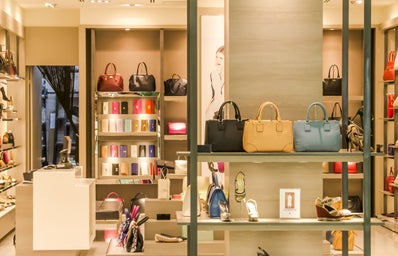Clothing consistently changes decade to decade. Each era has looks and colors that define it. For instance we all associate go-go boots with disco days and chokers with the ’90s and 2016. Fashion defines us; it is the most basic way to express yourself and in turn get a read on someone else. When trying to pick what is “you”, consider making thrift shops you first destination on the hunt.
Why thrift shops are better then stores:
- Each piece of one of a kind. When you find that perfect dress, there’s not 10 more in various sizes waiting to be bought up by your classmates. The items you get are unique, each item in it is like a book with a story. While some stores like Goodwill do take newer clothes, you will find in a good thrift store that these cheap modern labels don’t often appear, which is actually a benefit to you.
- Older clothing is actually made better. In the 60s and 70s, people had a fraction of the amount of clothing we had now, therefore what they did have was made to last. Fabric quality was more pure, companies didn’t cut corners on construction techniques. Have you noticed how fast holes will appear in that new H&M crop top? That won’t happen to older clothes as easily because they used to pay more attention to seam quality and not put shirts together as quickly as possible.
- Vintage clothing is so in right now. How often have you asked someone where they got what they were wearing to hear “thanks, its vintage” and just thought, well there’s no way of me buying that, or thinking how cool! Fast fashion brands are finding inspiration in past decades, why not just get the real stuff rather than a knock off?
- Green is the New Black. Clothing in thrift stores have already had a life with someone, its true, but they are being given a second chance. Right now, fast fashion is filling up landfills, an author recently wrote that the Rocky Mountains could be built over again in clothes we throw out. Buying used keeps that out of the landfills while scientists figure out way to recycle clothing. And as they say, one man’s trash is another man’s treasure!
- You are more likely to find “Made in America”. Actually, most of our clothes used to be made and manufactured in the United States. NYC especially was known for their garment district and there oversea shipping was not prevalent. In the 1990’s, only 20 years about, over 40% of clothing was still manufactured in the US, now it is as little as 2%. That is shockingly low considering the average America buys 65 garments a year, and most of those will read “Made in China”, or Indonesia, or Bangladesh. Made in America is something to take pride in.
As far as finding the store, the internet will be the biggest asset. For those of you in Savannah, GA, I have some suggestions.
- Civvies is probably the most popular thrift store in downtown and for good reason. The Broughton street stores carries dresses for comparable prices to Urban Outfitters sales rack and actually are vintage, not designed to look that way. You can also sell your old clothes there and get your finds for free with store credit. Beyond that, the place has a vibe that brings you back while maintaining a color coordination that appeals to the OCD in all of us.
- The Future on Forsyth is another place for good finds. The name contraries their clothing selection, however. They have 5 buyers who search North America for good finds and will ship them to the store. They also feature local artists and jewelry makers in the store tying in the local economy and adding to unique finds.
Being in college, cheap clothing is often all too appealing. When its time to find a dress for formal, or you look in your closet and just don’t see anything to wear, consider alternatives to a cheap top. Thrift stores and vintage shops are some of the best, greenest ways to upgrade you look this season.

